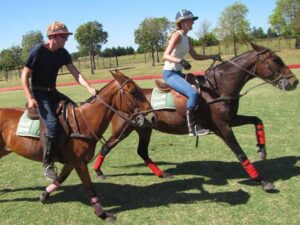- June 28, 2023
- Horse Riding , Polo Horse
- Comments : 0
Why is horseback riding a physical exercise?
Riding a horse is considered physical exercise because it involves movement and the activation of different muscle groups, as well as cardiovascular work. Here are some reasons why horseback riding is considered a form of exercise:
- Balance and stability: Riding a horse requires maintaining proper balance in the saddle. This involves using the muscles in your legs, glutes, and core to maintain a stable posture while the horse is in motion.
- Muscle strength: Horseback riding also engages various muscle groups. Leg muscles are used to stay in the saddle and communicate with the horse, while the muscles in your core are activated to maintain proper posture. Additionally, arm and back muscles are used to guide and control the horse through the reins.
- Cardiovascular: Depending on the intensity and duration of the ride, horseback riding can also be a cardiovascular exercise. The natural rhythm of a horse’s gallop or trot can elevate your heart rate and promote blood circulation, contributing to your cardiovascular system.
- Flexibility: Horseback riding can also improve flexibility as it requires coordinated movements from different parts of the body. The ability to adapt to the horse’s movement and adjust your body position helps stretch and strengthen muscles, thereby enhancing overall flexibility.
- Additional benefits: In addition to the physical aspect, horseback riding can also have mental and emotional benefits, such as reducing stress, increasing confidence, and improving the connection with nature and animals.
In summary, horseback riding involves the use of different muscle groups, improves balance and stability, promotes strength and flexibility, and can have cardiovascular benefits. For these reasons, it is considered a beneficial form of physical exercise for health and well-being.

